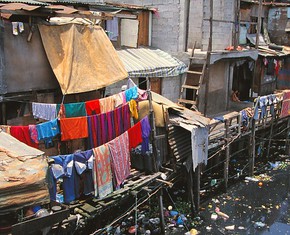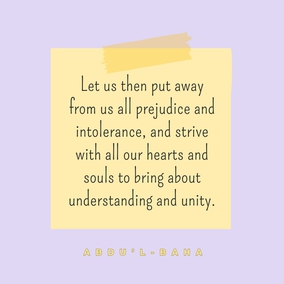The views expressed in our content reflect individual perspectives and do not represent the authoritative views of the Baha'i Faith.
As a recently published novelist, I wondered before publication if a photograph of my black face should be reproduced on the book’s inside cover.
Why? Well, I wrote a historical novel called City of Desire about a young white woman who, because of the severely limited options before her, chose to become a prostitute in 1830’s New York. Based on a true story, her rise and fall fascinated me, and I wanted to understand her character, her choices, and the culture that molded her. As a man, too, I wanted to understand the struggle of women to be free.
 But I feared a possible challenge coming from self-appointed members of the identity police, the people who think they have the right to determine group membership and excoriate those who dare to penetrate barriers imposed for outsiders, “those people” who don’t belong, “the other” who can’t possibly understand what it is to be black, white, female, male, Muslim, or Christian, or any other difference. Take your pick; the list is endless.
But I feared a possible challenge coming from self-appointed members of the identity police, the people who think they have the right to determine group membership and excoriate those who dare to penetrate barriers imposed for outsiders, “those people” who don’t belong, “the other” who can’t possibly understand what it is to be black, white, female, male, Muslim, or Christian, or any other difference. Take your pick; the list is endless.
I heard those “identity police” voices in my head: “How dare you? Who do think you are? How can you possibly know what it is to be a white woman? Stay in your place. Write about what you know, and only what you know. If you do otherwise, you are appropriating our space and taking from us what is legitimately and exclusively ours.”
Writers are usually told one tired nostrum in classes and workshops: Write about What You Know. The familiar makes your work easier and more authentic, advisors and teachers say. If you write what you know, you’re less open to criticism. After all, this is your experience.
But think about it. If all writers followed this admonition, then we would write only memoirs or autobiographies. Painters would paint only self-portraits. Actors would only play themselves. Instead, artists do much more, and have done so since the beginning of storytelling and artistry itself. Artists extend themselves into uncharted territory so they can imagine and empathize with others—so they can make a human connection unmitigated by the artificial barriers we erect to keep us apart.
Ultimately, I decided against removing my photograph. I refused to capitulate to a rising culture of tribalism, where people live in their own bubbles, hearing only what comforts them, reaffirming their assumptions and prejudices, reinforcing the righteousness of their cause and the status of their group.
These separatist impulses have exponentially intensified as we all have become more aware of a diverse and complex world. The world is uniting, as Baha’u’llah promised it would in the middle of the 19th century:
The purging of such deeply-rooted and overwhelming corruptions cannot be effected unless the peoples of the world unite in pursuit of one common aim and embrace one universal faith. – Baha’u’llah, Tablets of Baha’u’llah, p. 68.
Some people fear this fact of increasing unity, globalization and human connection, hating those who are different from themselves and trying to wall themselves off from others.
But literature, since the beginning of art itself, has demonstrated the exact opposite, focusing on our common humanity despite our differences. Literature tears down walls, and shows us we are all human and all one. We all feel love, anger, resentment, and hope; we all strive; we all want connection:
… the true worth of artists and craftsmen should be appreciated, for they advance the affairs of mankind …. True learning is that which is conducive to the well-being of the world, not to pride and self-conceit, or to tyranny, violence and pillage. – Baha’u’llah, from a tablet to an individual Baha’i.
So as an artist, as a writer, and as a Baha’i, I made the opposite decision: to write about what I don’t know, what I don’t already understand, for writing and reading are exercises in empathy and understanding, the effort to reach and go beyond personal experience and categories with other peoples, other cultures, other times. This basic human need for transcending boundaries has created narrative, history, and art.
These artistic manifestations of the human spirit are gifts to us all, an offering up of what we artists see and understand, so that others will see and understand creators and their creations, what it means to live and to die.
We can never fully understand, of course; we all remain mysteries, even to ourselves. But the attempt at understanding is what matters. It is incumbent on every one of us to be gracious in the receipt of this divine gift, to accept it as a way of connecting across our divisions. In the same way, as we sit eternally gratified in a darkened theatre, we accept Shakespeare who wrote about women and kings when he was neither.
Last week I heard on National Public Radio a remarkable story about a Somali prisoner condemned to lifetime solitary confinement for writing a complaint letter to a local hospital. Recently married, he feared that he would never see his wife again, and in his despair, he contemplated suicide. He also admitted that he began to resent his wife for being free; and soon his resentment turned to hatred.
 Then during his incarceration, a neighbor in another cell began to share, using modified Morse Code through a wall, Leo Tolstoy’s massive novel Anna Karenina, the story of an aristocratic woman in a loveless marriage who has an open affair, faces censure from her society, and eventually commits suicide, throwing herself under a train.
Then during his incarceration, a neighbor in another cell began to share, using modified Morse Code through a wall, Leo Tolstoy’s massive novel Anna Karenina, the story of an aristocratic woman in a loveless marriage who has an open affair, faces censure from her society, and eventually commits suicide, throwing herself under a train.
Recounting his story, the Somali man tells listeners that the book saved his life, for through it he remained connected to the outside world and humanity. His admission that Anna Karenina’s story, her loss of family and personal despair, became his story, and inspired empathy for his new bride, for her isolation and sense of loss.
He once worried that she would abandon him and marry another. Hearing Tolstoy’s book, he now understood that she suffered too, and accepted her right to move on and live a life without him.
He also forgave himself for his descent into despair, for feeling resentment toward his wife, for wanting to die. In the process, he rediscovered his will to live.
Eight years later, after political change in Somalia, he was reunited with his wife.
Leo Tolstoy wrote his great novel for his Russian and other European readers. He could not have known about Somalia, an African Republic that came into existence in the twentieth century. But books, especially great books, can have unintended consequences: a story about the suffering of a white Russian aristocrat so resonated with a suffering African that he connected with a fictional character, empathized with the suffering of his own separated wife, and found acceptance of his own human frailty.
Ultimately, we write and we read to make connection, and in that connection, we find our common humanity. This is why I read. This is why I write.
There is a reason why dictators, autocrats and other despots go after writers and books early in their regimes. They want to sustain the myth of eternal separation in the self-justifying bubble of the separate tribe. These efforts may last for a while, but eventually they are defeated. In the end all truth tellers, writers, artists, readers, philosophers, reformers, and seekers prevail.
I am proud to be a writer, because it means my story is your story, and your story is mine.
















Comments
Sign in or create an account
Continue with Googleor